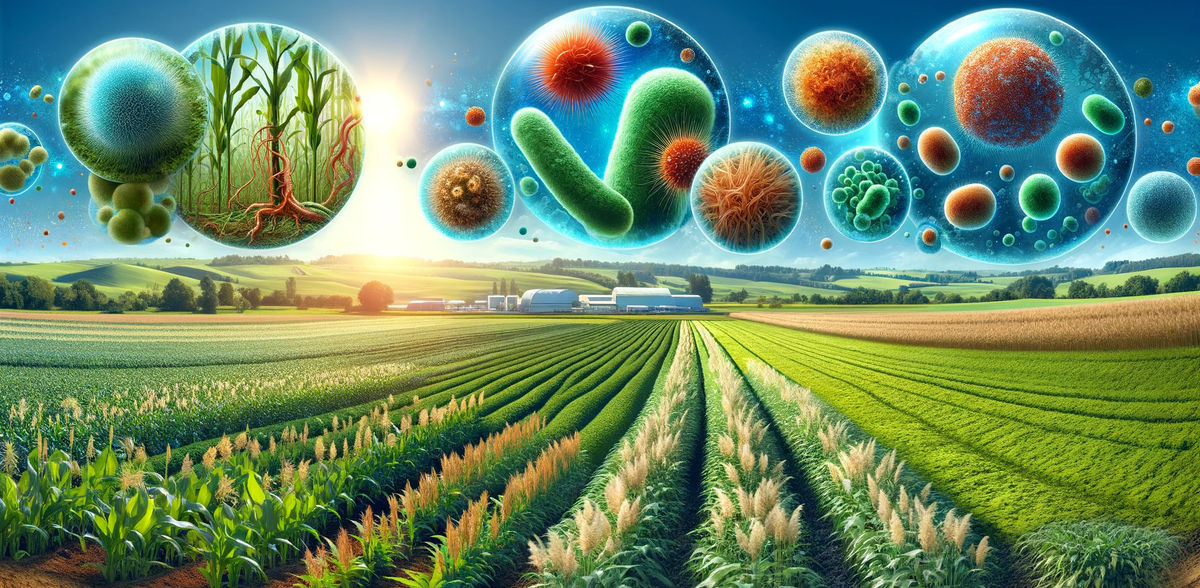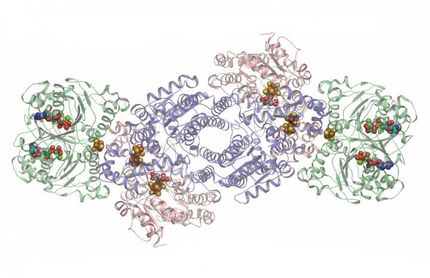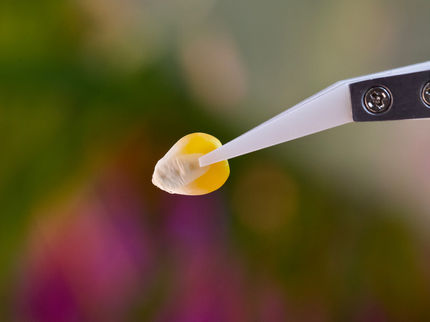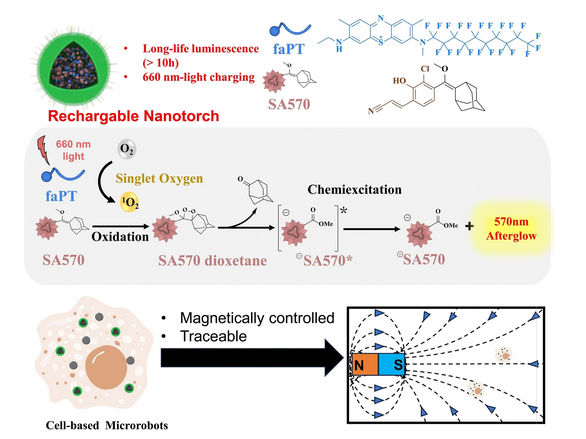Microbes could help reduce the need for chemical fertilizers
A coating protects nitrogen-fixing bacteria: Start-up to commercialise coated bacteria for large-scale use in regenerative agriculture
Production of chemical fertilizers accounts for about 1.5 percent of the world’s greenhouse gas emissions. MIT chemists hope to help reduce that carbon footprint by replacing some chemical fertilizer with a more sustainable source — bacteria.
Bacteria that can convert nitrogen gas to ammonia could not only provide nutrients that plants need, but also help regenerate soil and protect plants from pests. However, these bacteria are sensitive to heat and humidity, so it’s difficult to scale up their manufacture and ship them to farms.
To overcome that obstacle, MIT chemical engineers have devised a metal-organic coating that protects bacterial cells from damage without impeding their growth or function. In a new study, they found that these coated bacteria improved the germination rate of a variety of seeds, including vegetables such as corn and bok choy.
This coating could make it much easier for farmers to deploy microbes as fertilizers, says Ariel Furst, the Paul M. Cook Career Development Assistant Professor of Chemical Engineering at MIT and the senior author of the study.
“We can protect them from the drying process, which would allow us to distribute them much more easily and with less cost because they’re a dried powder instead of in liquid,” she says. “They can also withstand heat up to 132 degrees Fahrenheit, which means that you wouldn’t have to use cold storage for these microbes.”
Benjamin Burke ’23 and postdoc Gang Fan are the lead authors of the paper, which appears in the Journal of the American Chemical Society Au. MIT undergraduate Pris Wasuwanich and Evan Moore ’23 are also authors of the study.
Protecting microbes
Chemical fertilizers are manufactured using an energy-intensive process known as Haber-Bosch, which uses extremely high pressures to combine nitrogen from the air with hydrogen to make ammonia.
In addition to the significant carbon footprint of this process, another drawback to chemical fertilizers is that long-term use eventually depletes the nutrients in the soil. To help restore soil, some farmers have turned to “regenerative agriculture,” which uses a variety of strategies, including crop rotation and composting, to keep soil healthy. Nitrogen-fixing bacteria, which convert nitrogen gas to ammonia, can aid in this approach.
Some farmers have already begun deploying these “microbial fertilizers,” growing them in large onsite fermenters before applying them to the soil. However, this is cost-prohibitive for many farmers.
Shipping these bacteria to rural areas is not currently a viable option, because they are susceptible to heat damage. The microbes are also too delicate to survive the freeze-drying process that would make them easier to transport.
To protect the microbes from both heat and freeze-drying, Furst decided to apply a coating called a metal-phenol network (MPN), which she has previously developed to encapsulate microbes for other uses, such as protecting therapeutic bacteria delivered to the digestive tract.
The coatings contain two components — a metal and an organic compound called a polyphenol — that can self-assemble into a protective shell. The metals used for the coatings, including iron, manganese, aluminum, and zinc, are considered safe as food additives. Polyphenols, which are often found in plants, include molecules such as tannins and other antioxidants. The FDA classifies many of these polyphenols as GRAS (generally regarded as safe).
“We are using these natural food-grade compounds that are known to have benefits on their own, and then they form these little suits of armor that protect the microbes,” Furst says.
For this study, the researchers created 12 different MPNs and used them to encapsulate Pseudomonas chlororaphis, a nitrogen-fixing bacterium that also protects plants against harmful fungi and other pests. They found that all of the coatings protected the bacteria from temperatures up to 50 degrees Celsius (122 degrees Fahrenheit), and also from relative humidity up to 48 percent. The coatings also kept the microbes alive during the freeze-drying process.
A boost for seeds
Using microbes coated with the most effective MPN — a combination of manganese and a polyphenol called epigallocatechin gallate (EGCG) — the researchers tested their ability to help seeds germinate in a lab dish. They heated the coated microbes to 50 C before placing them in the dish, and compared them to fresh uncoated microbes and freeze-dried uncoated microbes.
The researchers found that the coated microbes improved the seeds’ germination rate by 150 percent, compared to seeds treated with fresh, uncoated microbes. This result was consistent across several different types of seeds, including dill, corn, radishes, and bok choy.
Furst has started a company called Seia Bio to commercialize the coated bacteria for large-scale use in regenerative agriculture. She hopes that the low cost of the manufacturing process will help make microbial fertilizers accessible to small-scale farmers who don’t have the fermenters needed to grow such microbes.
“When we think about developing technology, we need to intentionally design it to be inexpensive and accessible, and that’s what this technology is. It would help democratize regenerative agriculture,” she says.
Original publication
Other news from the department science
Most read news
More news from our other portals
Something is happening in the life science industry ...
This is what true pioneering spirit looks like: Plenty of innovative start-ups are bringing fresh ideas, lifeblood and entrepreneurial spirit to change tomorrow's world for the better. Immerse yourself in the world of these young companies and take the opportunity to get in touch with the founders.

























































